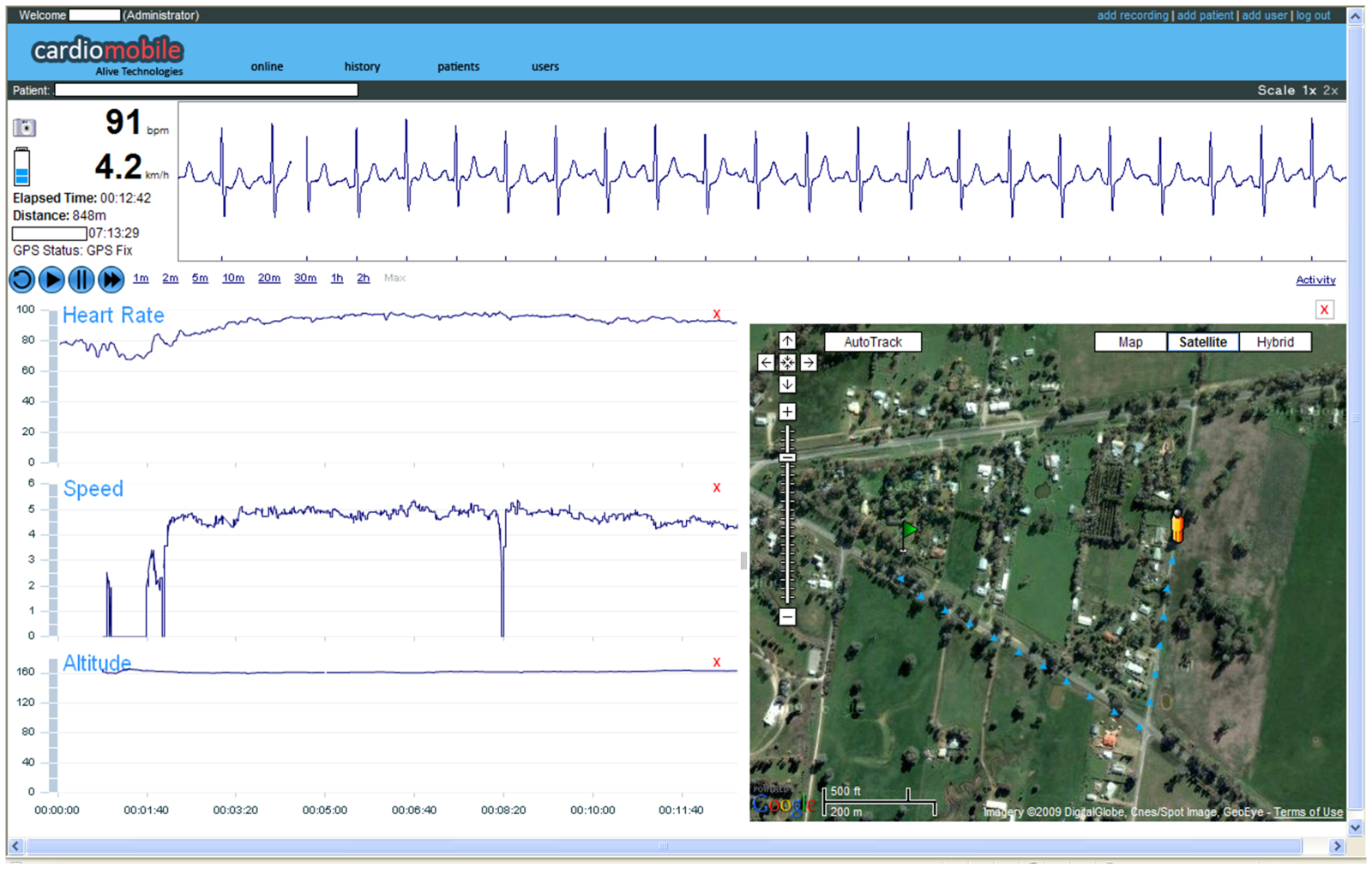Seeking to overcome the poor attendances at cardiac rehab classes by patients recovering from heart attacks and surgery, Brisbane-based scientists have brought modern technology to bear.
 The system pioneered by Charles Worringham and his colleagues at Queensland University of Technology (QOT) and published this week in the journal PLoS One, comprises a pre-programmed smart-phone with built-in heart-monitoring software. The user simply turns on the device, attaches the monitoring pad and then commences their exercise programme, observed remotely by an exercise-trained lab support worker who follows their progress remotely, in real time, as the data is beamed back by the phone. A GPS system built into the phone is also used to record the rate at which the participant is moving.
The system pioneered by Charles Worringham and his colleagues at Queensland University of Technology (QOT) and published this week in the journal PLoS One, comprises a pre-programmed smart-phone with built-in heart-monitoring software. The user simply turns on the device, attaches the monitoring pad and then commences their exercise programme, observed remotely by an exercise-trained lab support worker who follows their progress remotely, in real time, as the data is beamed back by the phone. A GPS system built into the phone is also used to record the rate at which the participant is moving.
"The literature is stuffed full of critical publications saying that cardiac rehabilitation attendances are deplorable, but there's not one single solution being put forward," says Worringham. "So we decided to try to change things."
A programme of regular exercise and support from trained medical professionals following a heart attack is associated with significant health benefits including a reduced risk of a second event occurring. But in many countries, and especially in Australia where long travelling distances faced by rurally-based individuals can deter or prevent attendance at follow up clinics, patients often end up not benefiting from these interventions.
To find out whether their solution was practical, the QUT team initially enrolled 7 patients, including a country and western singer on tour and a carless farmer, in a six-week trial of the new gadget. They found that in all aspects, including exercise tolerance, mood and quality of life, the patients improved on-par with the results achieved by equivalent in-hospital programs. The participants also enjoyed the convenience and attraction of exercising outdoors rather than confined to an exercise bike or treadmill at an indoor gym facility.
This result could mark a big step forward for this field because even in countries with (allegedly) good transport links and a close proximity to healthcare, like Britain, only about 30% of patients actually attend cardiac rehabilitation. There therefore appears to be more than just a geographical barrier that this technology is capable of surmounting...
- Previous Oily fish really does work
- Next New way to KO MRSA










Comments
Add a comment